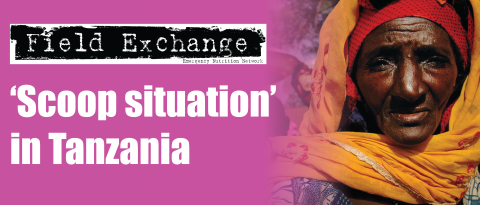Joint Statement on micronutrient deficiencies in emergencies
A Joint Statement has been issued by WHO, WFP and UNICEF on preventing and controlling micronutrient deficiencies in populations affected by an emergency. It focuses on pregnant and lactating women and children aged 6 to 59 months, as the groups most vulnerable to micronutrient deficiencies and their consequences. For a pregnant woman these include a greater risk of dying during childbirth, or of giving birth to an underweight or mentally impaired baby. For a lactating mother, her micronutrient status determines the health and development of her breastfed infant, especially during the first 6 months of life. For a young child, micronutrient deficiencies increase the risk of dying due to infectious disease and contribute to impaired physical and mental development.
Micronutrient deficiencies can easily develop during an emergency or be made worse if they are already present. So the micronutrient needs of people affected by a disaster must be adequately met. One way of achieving this is the regular provision of adequate amounts of foods fortified with micronutrients as part of food rations during emergencies. Fortified foods include corn soya blend, biscuits, vegetable oil enriched with vitamin A, and iodised salt.
However, foods fortified with micronutrients may not fully meet the needs of certain nutritionally vulnerable sub-groups. Two daily multiple micronutrient formula have been developed by UNICEF and WHO to meet the recommended nutrient intake (RNI) of pregnant and lactating women and children aged 6-59 months in emergencies (see table 1). Pregnant and lactating women should be given their supplement (1 RNI/day) whether they receive fortified rations or not. Dosages and schedule for administration of the children's supplement are included for situations where there is or there is not provision of fortified rations. Recommendations are made regarding continuation of iron and folic acid supplementation in pregnant and lactating women, and vitamin A supplementation to young children and mothers post-partum. Breastfeeding and appropriate complementary feeding should be promoted actively.
The Joint Statement recommends that multiple micronutrient supplements should be given until the emergency is over and access to nutrient rich foods is restored. At this time the micronutrient status of the population should be assessed to decide whether further interventions to prevent and control micronutrient deficiencies are needed.
The delivery of supplements should be monitored to assess coverage, existing micronutrient programmes should continue as before the emergency, and the health of target groups monitored for deficiencies as well as excessive consumption. The continued need for supplements and fortified foods should be assessed periodically during and after the emergency. As the crisis wanes, the general distribution of supplement is likely to be reduced and then increasingly targeted to specific groups.
The Joint Statement is available at: www.who.int/nutrition/publications/WHO_WFP_UNICEFstatement.pdf
| Table 1 Composition of multiple micronutrient supplements for pregnant women, lactating women, and children from 6 to 59 months of age | ||
| Pregnant/lactating women | Children (6-59 months) | |
| Vitamin A ?g | 800.0 | 400.0 |
| Vitamin D ?g | 5.0 | 5.0 |
| Vitamin E mg | 15.0 | 5.0 |
| Vitamin C mg | 55.0 | 30.0 |
| Thiamine (vitamin B1) mg | 1.4 | 0.5 |
| Riboflavin (vitamin B2) mg | 1.4 | 0.5 |
| Niacin (vitamin B3) mg | 18.0 | 6.0 |
| Vitamin B6 mg | 1.9 | 0.5 |
| Vitamin B12 ?g | 2.6 | 0.9 |
| Folic acid ?g | 600.0 | 150.0 |
| Iron mg | 27.0 | 10.0 |
| Zinc mg | 10.0 | 4.1 |
| Copper mg | 1.15 | 0.56 |
| Selenium ?g | 30.0 | 17.0 |
| Iodine ?g | 250.0 | 90.0 |
1WHO, WFP, UNICEF Joint Statement. Preventing and controlling micronutrient deficiencies in populations affected by an emergency. Multiple vitamin and mineral supplements for pregnant and lactating women, and for children aged 6 to 59 months. WHO, 2007
2Both supplements contain iron (27mg/day for pregnant/ lactating women and 10mg/day for children 6-59 months). Risks and consequent recommendations regarding iron and folic acid supplementation in highly malarious regions are given in a WHO statement, Iron supplementation of young children in regions where malaria transmission is intense and infectious disease highly prevalent. (undated). Available at http://www.who.int/child-adolescent-health/New_Publications/CHILD_HEALTH/ WHO_statement_iron.pdf This WHO Statement is reflected in the recommendation of the Operational Guidance on Infant and Young Child Feeding in Emergencies, v2.1, February 2007, Section 5.1.2, a position reached by consensus at the UNSCN meeting in Rome, 2007. Available at http://www.ennonline.net/ife (Eds)
Imported from FEX website


